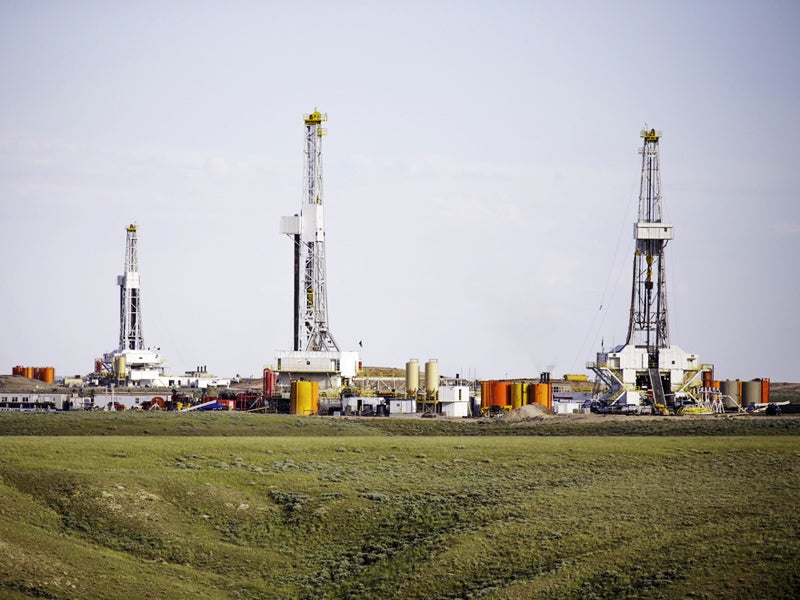Will Fracking-Induced Earthquakes Cause the Next Coal Ash Disaster?
Fracking-induced earthquakes and unstable coal ash dams are a deadly combination.

This page was published 9 years ago. Find the latest on Earthjustice’s work.
Scientists have confirmed that deep injection of wastewater produced by hydraulic fracturing causes earthquakes. Significant earthquakes have been scientifically linked to fracking in at least five states, including Arkansas, Colorado, Ohio, Oklahoma and Texas. In fact, parts of Texas and Oklahoma now face the same earthquake risk as California. Scientists in Indiana, the state with the largest number of toxic coal ash impoundments, are also investigating whether fracking is inducing earthquakes in their state.
What does this mean for the security of the nation’s nearly 900 toxic coal ash ponds and the communities that live near them? Coal ash is the toxic remains of coal that’s been burned in power plants for electricity, and it contains heavy metals like arsenic, lead and mercury. In the six states mentioned above, there are more than 220 coal ash ponds, including 13 rated as “high hazard,” where a dam failure is likely to cause loss of human life. Since ash pond dikes are often constructed out of the ash itself and built on weak foundations close to large bodies of water, they can be subject to “liquefaction,” or massive, uncontrolled failure in the event of an earthquake. Because the dams commonly contain millions of tons of toxic sludge and wastewater, earthquakes and coal ash are an exceptionally dangerous mix.
There is great cause for concern. With the runaway boom in U.S. fracking, the frequency of earthquakes is rising dramatically. From 1973 to 2008, there was an average of 21 earthquakes of magnitude 3.0 or larger each year in the central and eastern United States. Yet in 2015 alone, there were 1,010 earthquakes of that magnitude. This year, we are on course to beat that record. According to the U.S. Geological Survey, through mid-March, there have been 226 earthquakes of magnitude 3.0 or larger in the central U.S.
The EPA, in fact, recognizes the great danger earthquakes pose to coal ash ponds. In its recent coal ash rule, published in April 2015, the EPA requires that the dikes containing ash ponds meet federal dam safety standards for earthquakes by October 2016. If owners cannot demonstrate that their dams meet the standards, the owners must cease disposal within six months and close the ash ponds permanently.
This threat is real. We know already that many large coal ash ponds cannot meet the federal safety standards. In fact, Duke Energy recently admitted, in inspection reports published on its website, that ash ponds at 10 of its plants in three states could cause toxic spills in the event of an earthquake. Duke identified dikes that fail critical safety standards at its Cayuga, Wabash River, Gallagher and Gibson coal plants in Indiana, its Cliffside, Allen, Marshall, Sutton and Weatherspoon plants in North Carolina, and its W.S. Lee plant in South Carolina.
As fracking-induced earthquakes increase nationwide, Duke Energy and all other owners of coal ash dams must immediately increase the security of their dangerous impoundments—or else promptly close the toxic dumps altogether.
Earthjustice’s Clean Energy Program uses the power of the law and the strength of partnership to accelerate the transition to 100% clean energy.